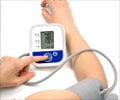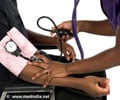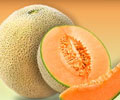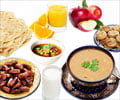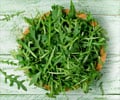The DASH Eating Plan
The DASH (Dietary Approaches to Stop Hypertension) eating plan can lower high blood pressure. DASH eating plan maintains that lowering the salt content from 2.3 gms per day to 1.5gm lowers blood pressure.
Studies by scientists supported by the National Heart, Lung and Blood Institute (NHLBI) have proved that a diet low in cholesterol, saturated fat, total fat and fat free or low fat milk and milk products plus fruits and vegetables help in lowering blood pressure. They named this diet the DASH eating plan.
Dr. Njeri Karanja, a nutrition researcher at the Kaiser Permanente Centre for Health Research in Portland Oregon and one of the creators of the DASH menu has said, “We were happy to learn that a simple change in diet may help some people prevent, or control blood pressure without medication.”
The DASH diet includes whole grain products, fish, poultry and nuts in optimal quantities and reduces the use of red meat, added sugar, sweetened beverages and sweets.
It gives the following recommendations
- 7 -8 servings of grain including whole wheat bread, pita bread, cereals, grits, oatmeal and English muffins
- 4-5 servings of vegetables including potatoes, tomatoes, peas, carrots, broccoli, squash, turnip greens, kale, collards, spinach, sweet potatoes and artichokes
- 4-5 servings of fruit including bananas, apricots, grapes, dates, oranges, grapefruit, melons, mangoes, prunes, pineapples, peaches, strawberries, raisins, tangerines, orange and grapefruit juices
- 2-3 servings of dairy foods including skim or low fat milk or low fat buttermilk, non fat or low fat yogurt, non fat cheese, part skim mozzarella cheese
- 2 or fewer servings of meat, poultry or fish including lean cuts trimmed of fat boiled, broiled or roasted
- 4-5 servings per week of nuts, seeds and legumes including peanuts, walnuts, almond, kidney beans and lentils
The DASH eating plan emphasizes the lowering of your daily sodium intake and decreasing your fat content especially trans fat (vegetable oils that have been treated with hydrogen to make them more solid).
By lowering the saturated fat and cholesterol content the diet promotes the healthy functioning of the heart. This diet is rich in potassium, calcium, magnesium, protein and fibre, low in sodium, and fat.
This diet excludes the use of processed foods; snack items high in salt and food canned in brine. The emphasis is on natural foods and the DASH plan can easily be adapted to a vegetarian diet by replacing chicken and fish with legumes and pulses.
The lower your sodium (salt intake) the lower is your blood pressure. Dietary salt increases blood pressure in most people with hypertension and in about quarter of those with normal pressure especially as one grows older.
This diet has no negative side effects. The main message of this diet is very simple. It advocates the use of fresh fruits and vegetables and low fat dairy products. It recommends a reduced intake of red meats and sweets. By eating foods rich in potassium the sodium intake is effectively lowered. However, potassium from natural sources and not from supplementation is recommended. It is also recommended that foods rich in calcium maintain normal blood pressure. New studies in calcium intake have shown that people with a low calcium intake seem to be at an increased risk for hypertension.
It is an easy to follow diet plan with enormous benefits to control and decrease high blood pressure. Many researchers have affirmed the benefits of the DASH diet through various studies and have found a significant lowering of blood pressure even in the susceptible group of Afro-Americans. However it may also be important that the DASH eating plan should evolve to become a lifelong system of healthy eating habits for it to have a long lasting benefit on patients with high blood pressure.
Do not stop your blood pressure medication without consulting your physician even after you begin the DASH diet. Exercise and decrease your stress levels to control your hypertension.






